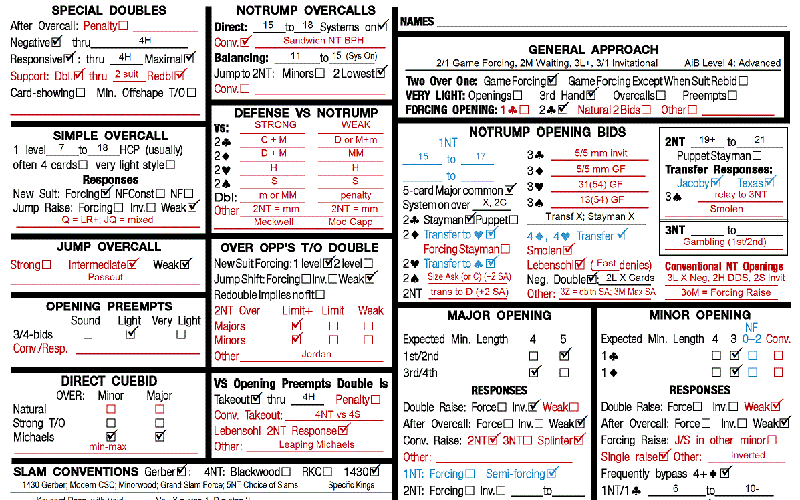Bidding is often the weakest part of a bridge player’s game. When bidding goes awry, players often think the solution is to learn another convention to handle the particular situation that caused the problem.
However, it’s important to keep in mind that whenever you use any convention, you give up one or more natural bids. With any convention, you need to decide if what you gain is worth what you give up.
From time time, every convention results in a “system fix”. Furthermore, rarely used complex conventions are not only difficult to learn, but easy to forget. And, many conventions are not played the same way by everybody. (As an example, Roman Keycard Blackwood can be played either 1430, or 3014.)
Larry Cohen, renowned bridge teacher, has written: “I am a staunch advocate of ‘less is more.’ My observation is that at every level of the game, players are using too many conventions. Too often I see players (from beginner to world champion) misusing or forgetting their methods. Everyone would benefit if they would just KISS. (Keep It Simple, Stupid.)”
Conventions You Should Know
So, what conventions do you need to know? If you are a social bridge player, then we recommend learning Stayman. Other useful conventions are Takeout Doubles, Blackwood (asking for aces and kings on the way to a slam) and the 2-club opening bid, which shows a very strong hand (usually 22 points or more), in conjunction with weak 2 bids.
If you are a duplicate bridge player, then the list becomes longer. We conclude this article with a list of useful conventions for duplicate players. However, an extensive arsenal of conventions will never take the place of clear bridge thinking. We know several superb bridge players who use very few conventions. The bottom line is that nothing replaces the basics of good bidding. By practicing good bidding habits, and adding useful conventions as needed, see better results.
Inferences are Critical
Concentrate on WHERE and HOW HIGH, and the inferences that you can draw about your partner’s strength and distribution. Remember that every bid your partner makes describes her hand further. Make inferences from what your partner has bid, as well as by what he has not bid. The idea is to concentrate on your partner’s cards, not your own. If you forget your hand, just look down!
If you are struggling or feeling frustrated with your game, then we recommend that you simplify, simplify, simplify. Strip it down to the absolute basics, which will handle 90% of the hands you encounter. Focus on WHERE and HOW HIGH. Once you’ve remastered the basics, consider gradually adding back useful conventions, as the need occurs.
In short, knowing many conventions will not categorically improve your game.
Conventions for Duplicate Players
Here are our recommendations for additional conventions for duplicate players:
- Negative Doubles
- Redouble
- Jacoby Transfers
- A convention or system for bidding when the opponents open 1 NT (e.g., Capalletti or DONT)
- 2NT after your partner’s weak 2-bid (asks for a feature, or Ogust)
- Jacoby 2NT
- Michaels
- Unusual NT
- Preemptive bids at the 3-level and beyond
For those who wish to go further, we recommend support doubles and redoubles, Smolen, some version of Drury, Roman Key Card Blackwood, a discard system, and splinter bids.

